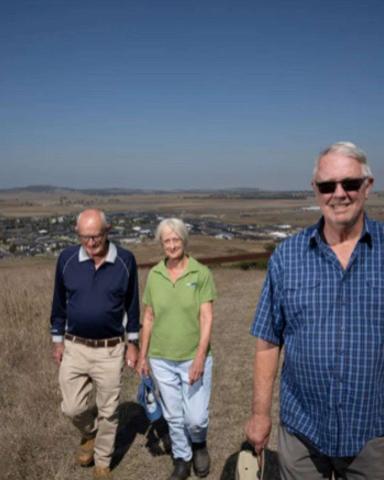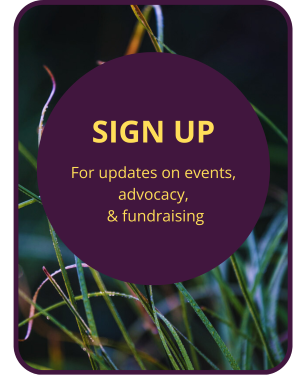A long-awaited feasibility study for the wallan wallan Regional Park has finally been released, sparking hope and enthusiasm among conservationists, local advocates, and the wider community.
This proposed parkland, extending north from the existing marram baba Upper Merri Creek Parklands, would protect a significant green corridor – comprising both environmental refuges and outdoor recreation areas – within Melbourne’s rapidly expanding northern growth corridor.
As Yasmin Kelsall, Environmental Planning Lead with Merri Creek Management Committee (MCMC), explains, the area consists of “a group of volcanic cones rising from a grassy plain full of wetlands with the Merri Creek running along one side. That combination of wetlands and volcanic cones – Green Hill, Spring Hill and Mt Fraser – is unique.”
 Wallan Environment Group members: Norbert Ryan, Cr Claudia James and Rod Eldridge.
Wallan Environment Group members: Norbert Ryan, Cr Claudia James and Rod Eldridge.
“These are some of the last wetlands of their kind in this part of Victoria,” says Yasmin. “They once flourished across Melbourne, but most were extensively drained, so seeing the protection and revival of this grouping of wetlands via the new parkland, would be very special.”
Habitat for threatened species such as the Growling Grass Frog, Latham’s Snipe, and the Golden Sun Moth makes the area ecologically significant. Finding ways to protect these natural assets, Yasmin emphasises, “is very much needed and very timely."
Local campaigner Rob Eldridge has been advocating for the park’s establishment since 2010. Through his work with MCMC and the Wallan Environment Group, he has contributed to a vision that balances conservation, recreation, and cultural heritage.
“My role has been the passionate local advocate, but it’s one of those things where you never get to this point without literally hundreds of people in various roles supporting it,” Rob reflects.
“The vision has been refined over the years, as we have found out more about the environment, the previous wetlands, and the significance of the area to the Traditional Owners. wallan wallan is the Wurundjeri Woi-wurrung name for the area, which means circular place of water.”
Rob’s passion for the region’s volcanic landscape and waterways is evident. “There’s nothing like it in Victoria,” he says. “It’s very obviously environmentally significant – and from a purely economic perspective it makes a lot of sense to restore wetlands and create a flood buffer as development in the area continues to increase.”
But he also highlights the park’s potential as a recreational resource for the rapidly growing communities around Wallan, where increasing urban density leaves children with fewer opportunities to connect with nature.
Rob believes the park, which could include wild, protected wetlands as well as active recreation areas, could provide a spectrum of recreational opportunities for around 200,000 people – bringing both physical and mental health benefits.
MCMC has welcomed the recent release of the feasibility study, which marks a significant step towards formal planning. We hope to be actively involved in an advisory committee, alongside Wallan Environmental Group, to help shape the park’s boundaries and guide the planning process.
Bernadette Thomas, MCMC’s CEO, describes the park’s potential as “a pre-eminent parkland in Melbourne’s growing north, providing a host of nature-based recreation opportunities around biodiversity, landscape, and cultural heritage values. The new communities of the growth corridor deserve this, and we look forward to continuing to champion its development.”
MCMC’s next steps include advocating for the formalisation and implementation of the park’s plan. As Yasmin Kelsall notes, “A lot of the proposals that are in the feasibility study now need to be firmed up in a formal wallan wallan Regional Park plan. We believe it's very important to have the park infrastructure in place as soon as possible, so that it’s very clear to developers and to anyone moving into these communities that the parks are there to be conserved and enjoyed.”
Rob Eldridge echoes this urgency: “You can’t retrofit a park of this size, so the feasibility report now needs to be used as part of the planning process. Public support, whether through letters to the editor, articles shared on social media, or conversations with elected representatives and candidates can help us keep the momentum going and secure that commitment.”





 Merri Creek Management Committee. 2 Lee St, East Brunswick, Victoria, Australia 3057
Merri Creek Management Committee. 2 Lee St, East Brunswick, Victoria, Australia 3057